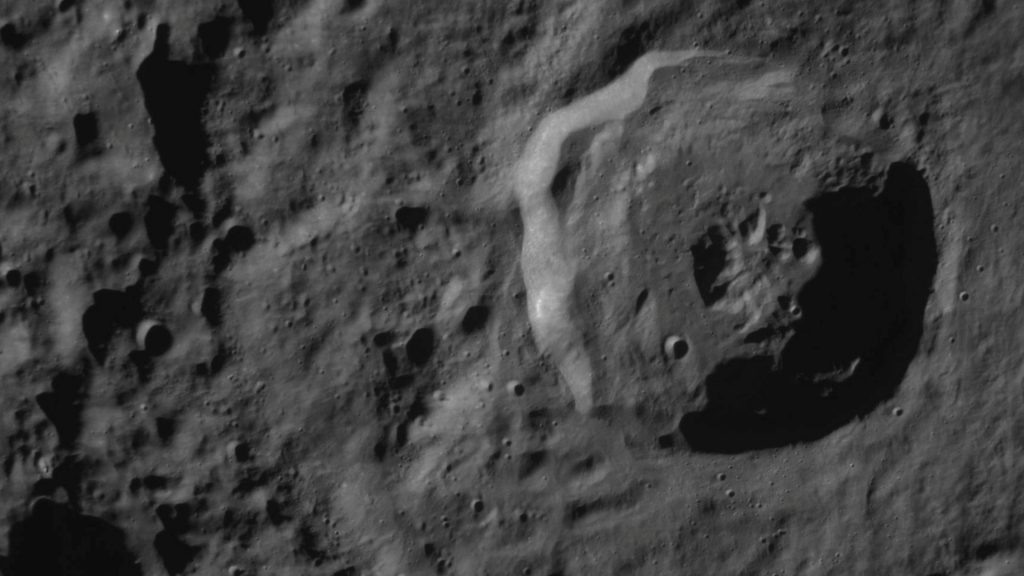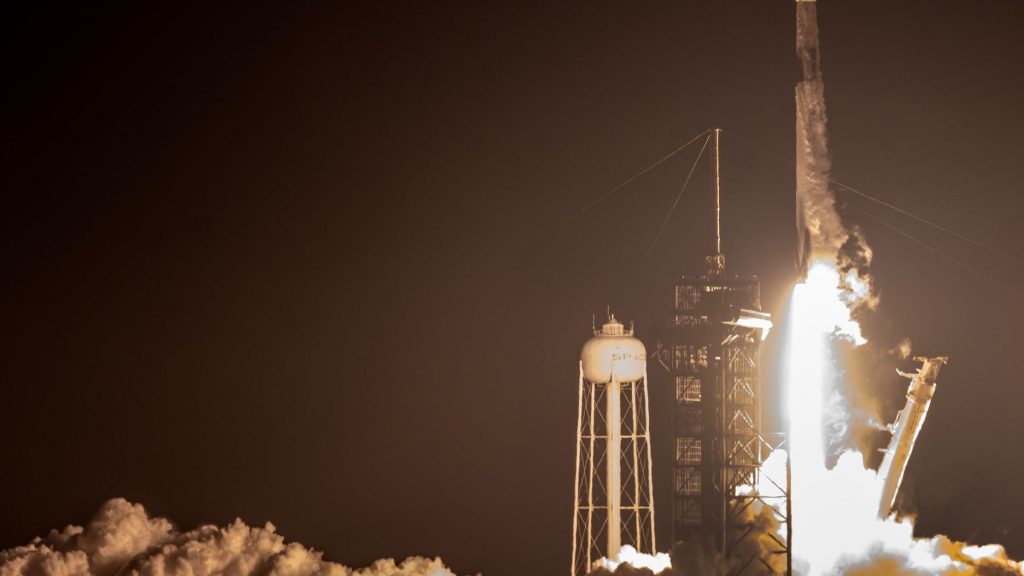USA. – Odysseus, scheduled to land on the moon on Thursday, the first U.S. landing in more than half a century, has sent a photo of the lunar surface ahead of landing at 5:49 p.m. ET. .
Photos taken by a module from private U.S. company Intuitive Machines show the moon heading toward the northern reaches of the unexplored region of the South Pole, according to NASA.
The Texas company, which will be the first U.S. company to set foot on the moon, detailed images captured by Odysseus’ navigation camera of the “Berkovich K crater in the northern equatorial highlands of the moon.”

It emphasizes that the undulating gray surface seen in the image is a crater about 50 kilometers in diameter with a mountain range at its center, which was formed when this ecosystem was formed.
Odysseus took off from Florida on February 15 and has conducted several NASA experiments. It is expected to land on the moon today. Due to the low temperature of the moon, it will have a few days to conduct experiments before the moon almost freezes. .
Odysseus from the Nova-C series has about 7 days before reaching the South Pole on lunar night, rendering him incapacitated.
The module is 4.3 meters tall and weighs 675 kilograms. It is the first American module to reach the moon since Apollo 17 in 1972. It is not expected to return to Earth.
Specifically, the landing site will be near the Marapet massif, about 300 kilometers from the moon’s south pole, which is an area full of “uncertainty” according to NASA experts.
Researchers believe the area consists of lunar highland material, similar to the Apollo 16 landing site.
The primary goal of the IM-1 mission is to bring scientific instruments and technology demonstrations to the lunar south pole.

Odysseus took off on a SpaceX Falcon 9 rocket in the early morning of February 15 from Launch Complex 39A at NASA’s Kennedy Space Center in central Florida without any incident.
This is the second mission of NASA’s Commercial Lunar Payload Services (CLPS) program after Peregrine and is part of Artemis’ return to the moon.
In January last year, Astrobotic Technology’s Peregrine module failed to carry NASA and other commercial payloads to the moon due to fuel supply issues and other reasons.
According to Intuitive Machines, the mission aims to create an economical platform to transport NASA scientific instruments as well as commercial cargo to the moon, paving the way for a sustainable human presence on and around the natural satellite.
The landing site is one of 13 areas NASA is considering for the Artemis III mission, which would be the program’s first crewed lunar mission and the first crewed flight of SpaceX’s Starship HLS lander.
Among the various NASA instruments carried by Odysseus are some to better measure fuel, and cameras to capture the sound and static of the dust plumes created as the module begins its descent to the lunar surface until it shuts down. image.
The interaction of natural activities with humans can also be studied, and the vehicle’s speed and direction and distance from the ground during descent to landing can be analyzed with high precision.
According to information from EFE

